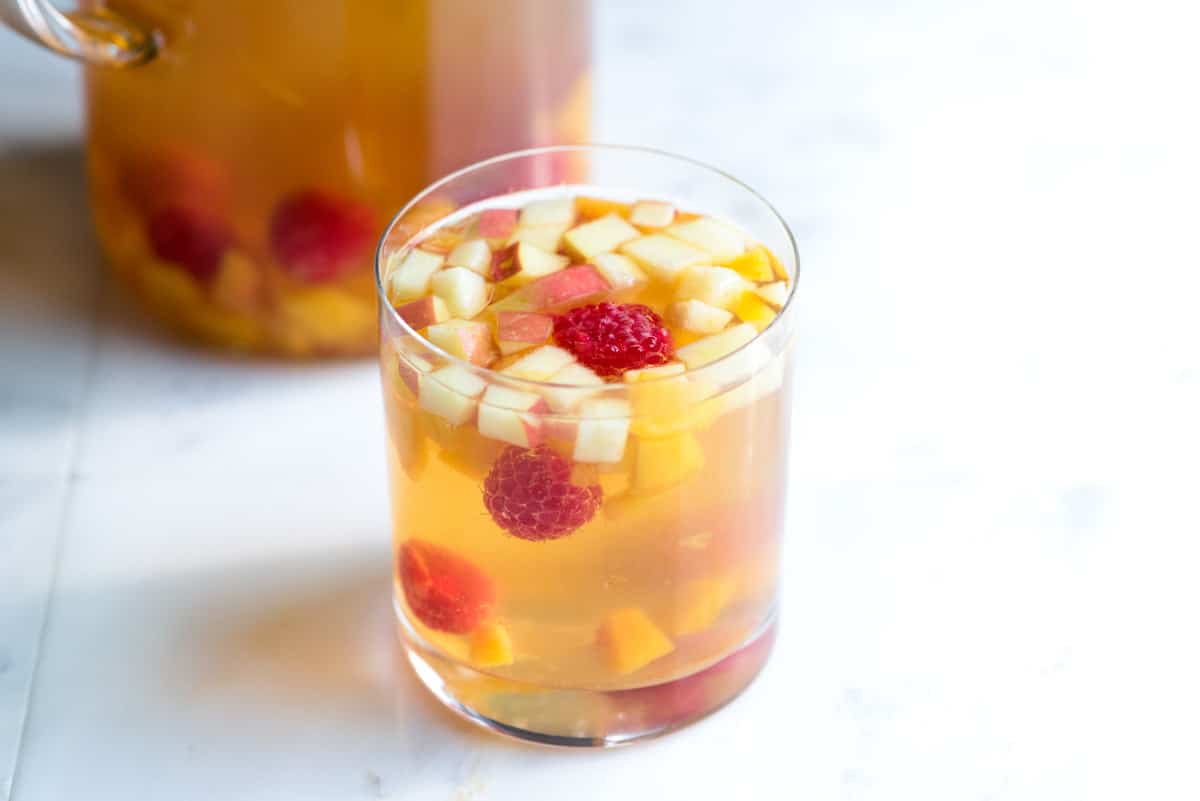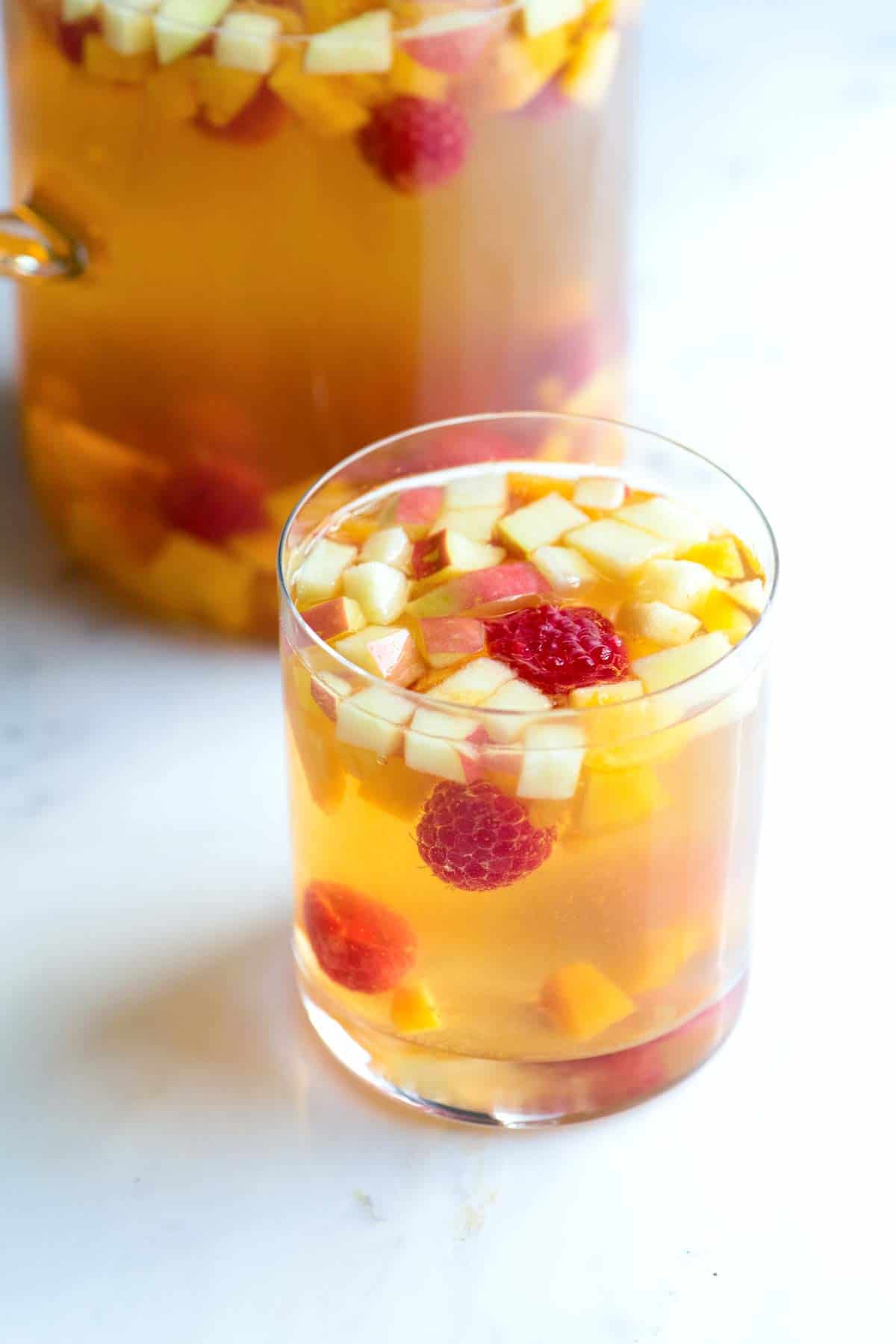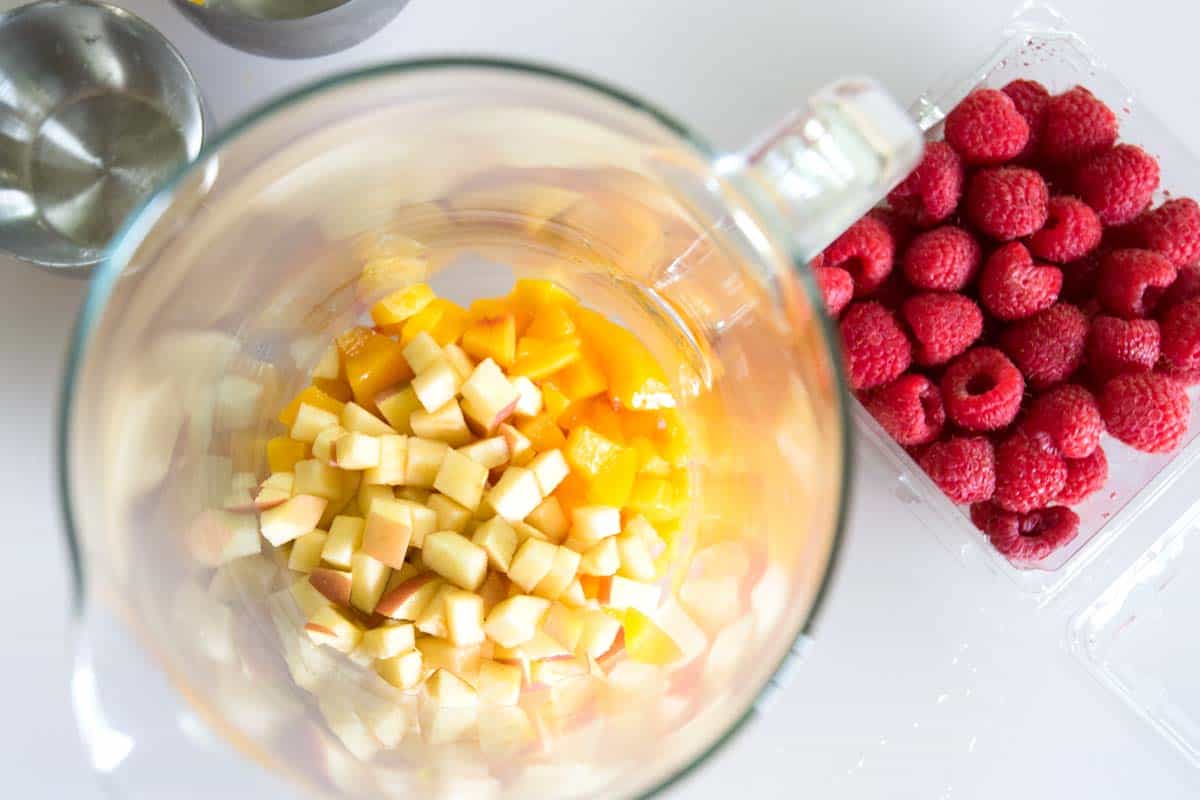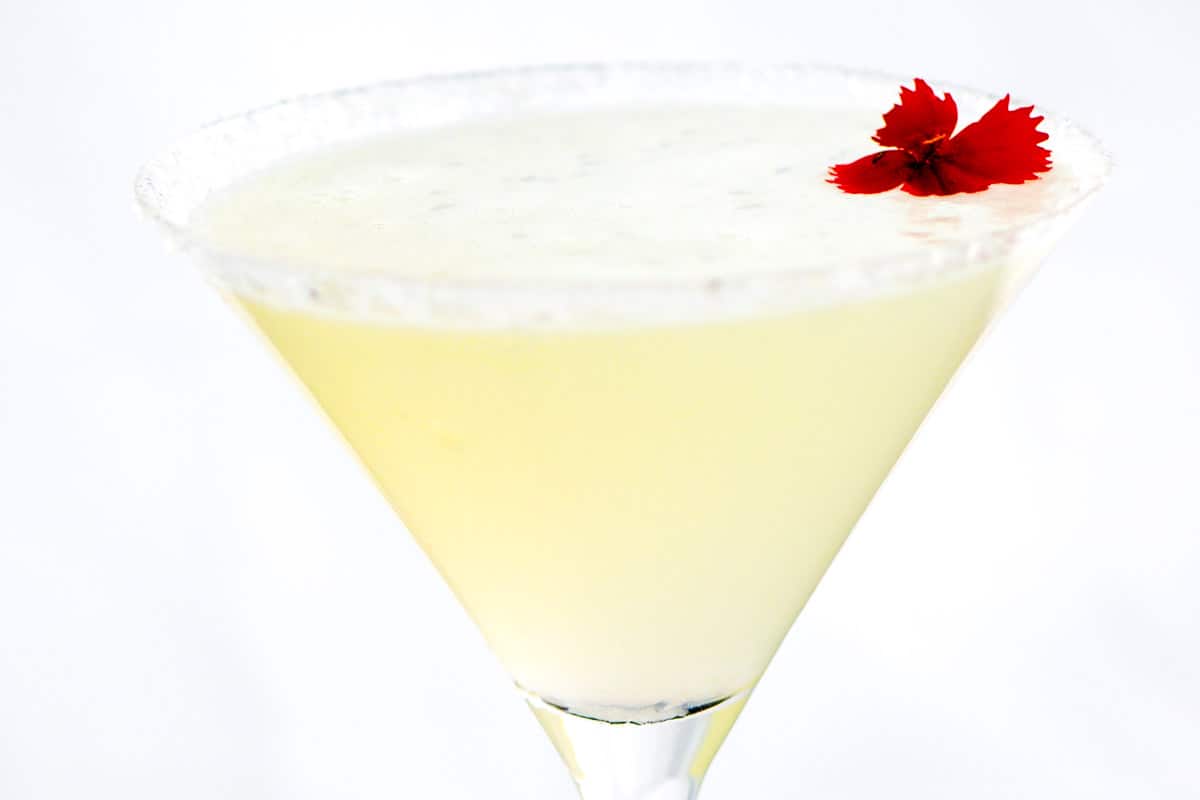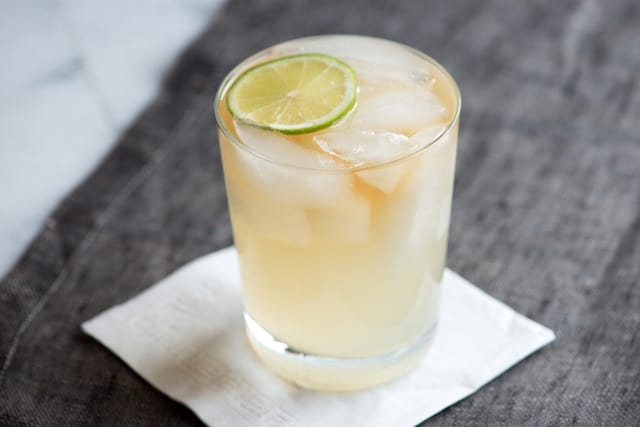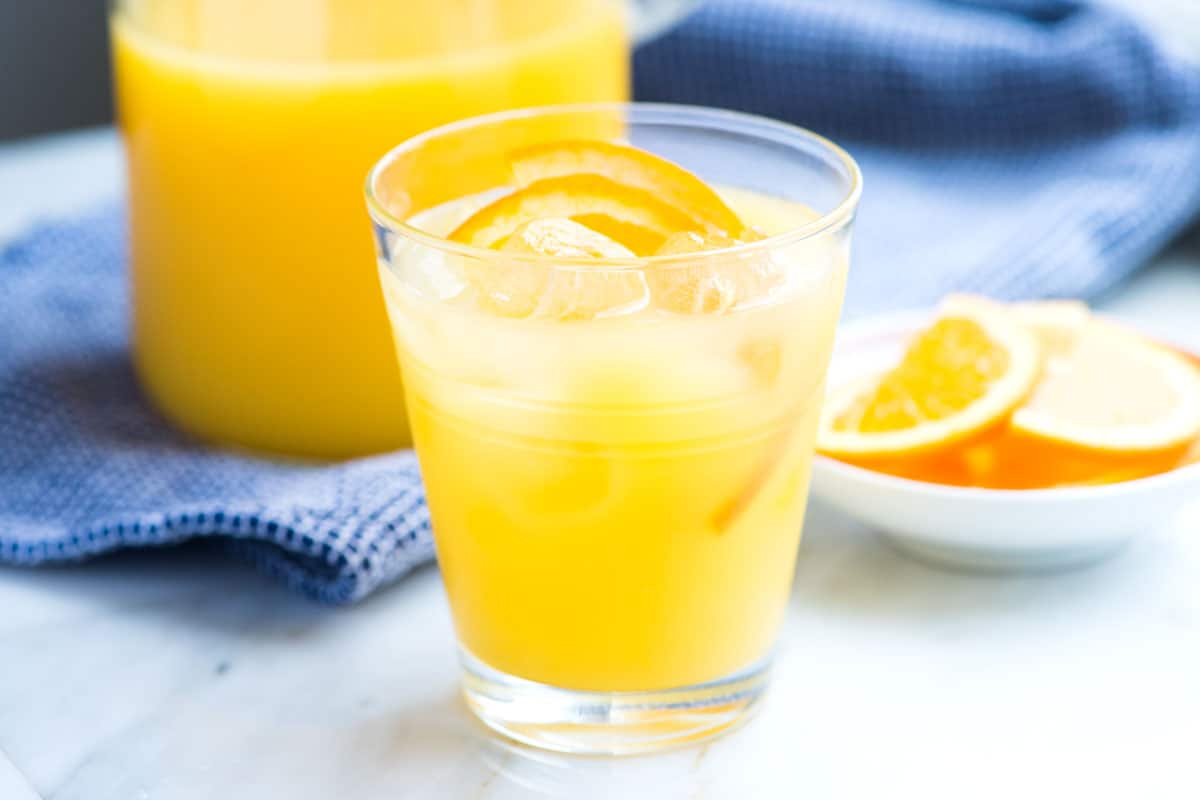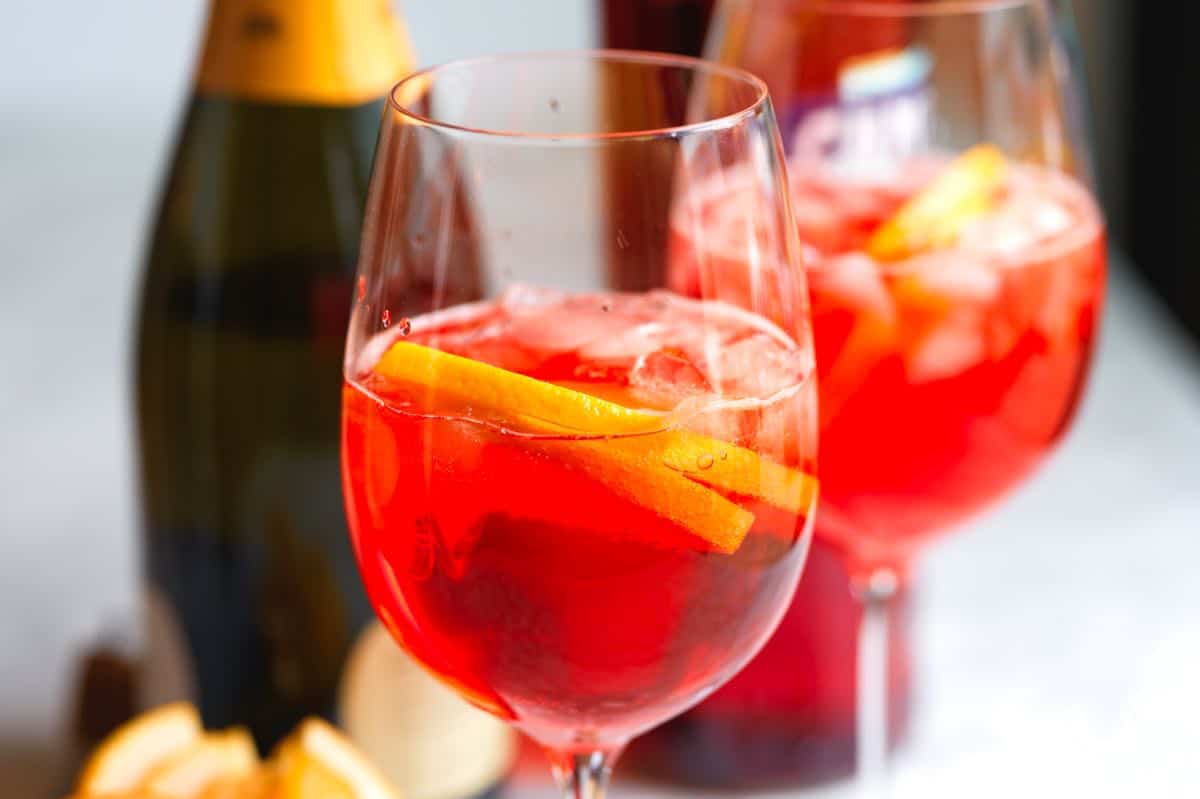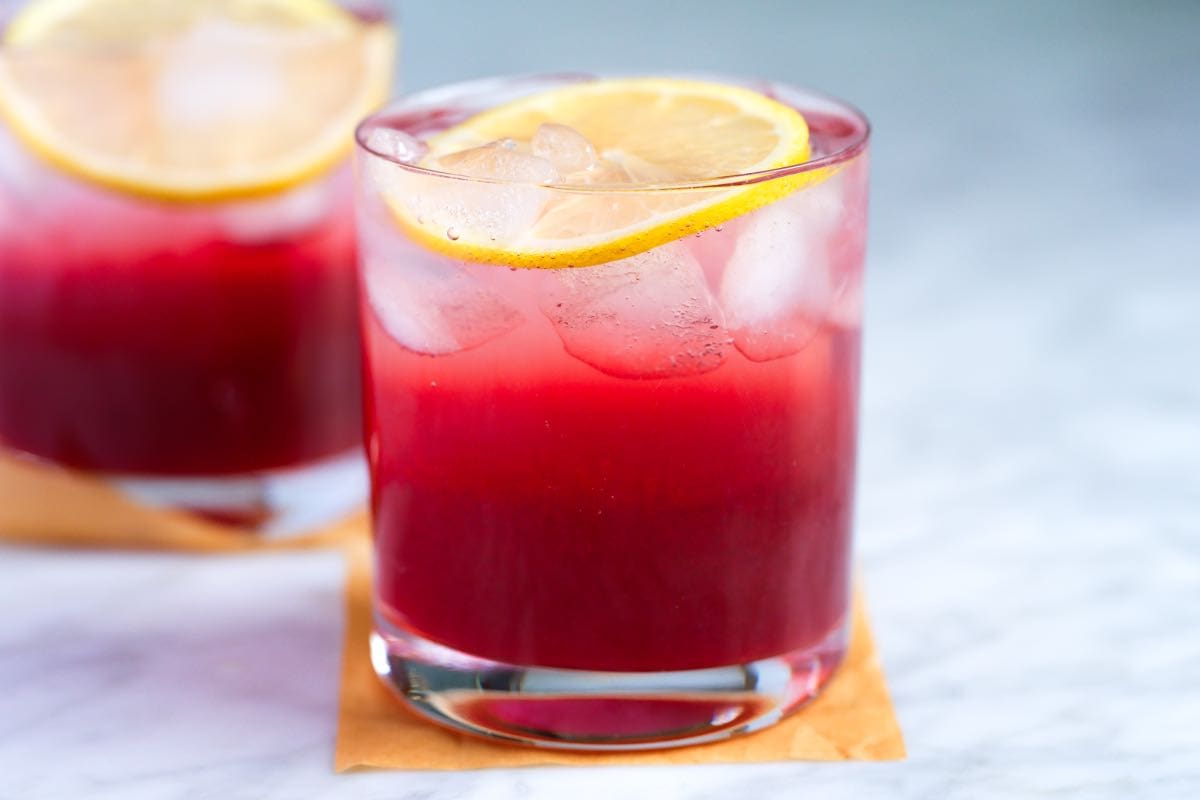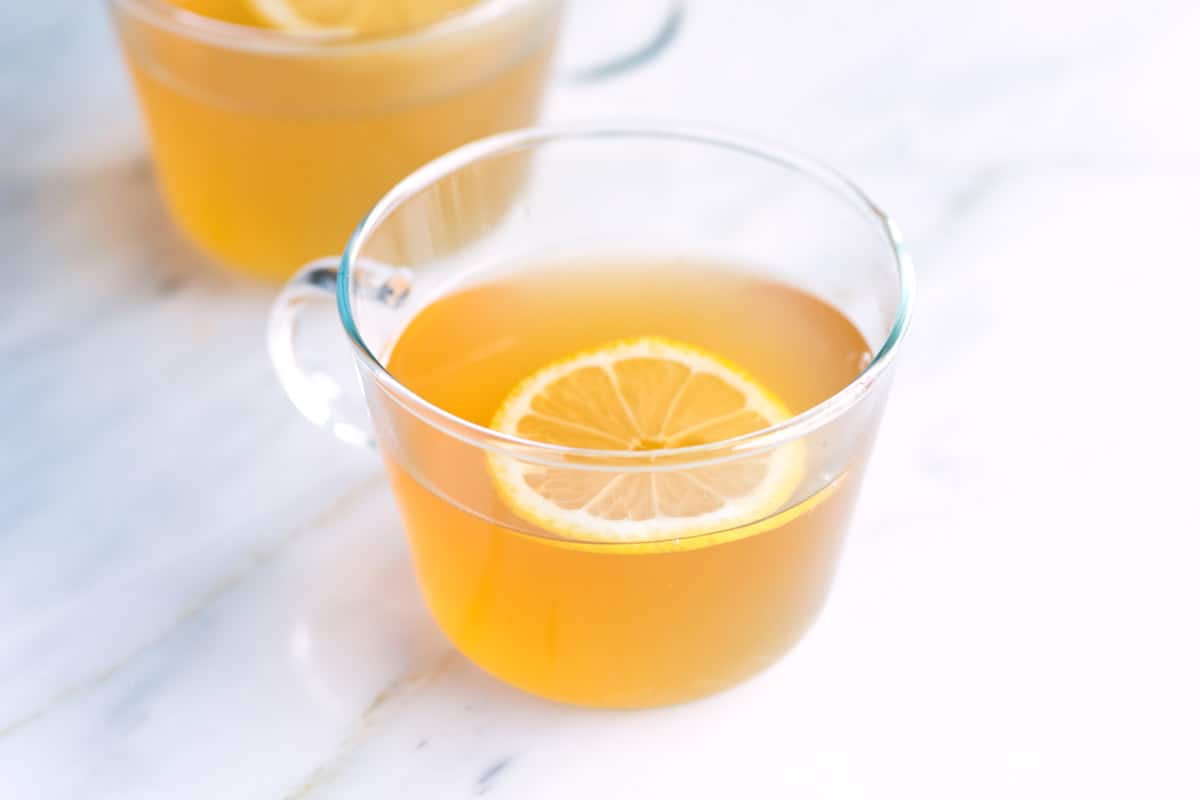How to Make Sangria with White Wine
Not only is this sangria recipe insanely delicious, it’s easy to make! The biggest thing to remember is that this (and all) sangrias get better with time. Make this up to 2 days in advance. The flavors just keep building and the sangria gets better and better. For the fruit, we love throwing in diced apple, peach, and fresh raspberries. The peaches you see in the photo were actually thawed frozen peaches from the store. Use fresh or frozen, just make sure they are extra ripe and peachy. Play around with what fruit you add — pears, apricots, nectarines, blueberries, orange slices are all great options. This is your sangria so add what you love and we bet it will be great.
The Wines: Moscato and Riesling
We call for two varieties of wine in our white sangria below: Moscato and an off-dry Riesling. Moscato is fruity, floral and slightly sweet and the Riesling has great acidity, balancing the fruit and sweetness from the Moscato. You can find excellent examples of both wines wine for less than $10 to $15 each. If you have never had Moscato wine before, the better bottles are lower in alcohol, on the sweeter side (but not cloying) and tend to have a floral, peachy aroma and flavor. Your best bet is to turn to Italy and look for bottles that have the words “Moscato d’Asti” on them. These are generally inexpensive, effervescent and quite delicious. We personally stay away from the large producers of Moscato (Gallo, Yellow Tail and Sutter Home). After comparing them to their Italian counterparts, they just didn’t cut it for us. Only buying one kind of wine works, too. Two bottles of Moscato will make a slightly sweeter sangria, while two bottles of off-dry riesling may not be sweet enough, which adding a tablespoon of honey or agave nectar will easily fix. For the Riesling, you have lots of options. We really enjoy Washington state’s rieslings, but you can find great values from all around the world (especially Germany and Australia). Most bottles we’ve seen have a sweetness scale on the back showing how sweet the bottle will be. Look for medium-dry to dry. If there isn’t anything shedding light on how sweet it is, this quick test can give you a rough idea of a riesling’s sweetness. Look for the listed alcohol, usually in small type on the front of the bottle. If it’s 12.5 percent or higher, the wine will taste dry; 11 to 12.5 percent will be off-dry; and percentages that are even lower will be sweet.
More Sangria Recipes
Our Favorite Red Sangria Recipe — You will love this classic sangria made with dry red wine, seasonal fruits, and brandy (optional).White Wine and Peach Sangria — Refreshing, fruity and fun! This white wine and peach sangria recipe is perfect for parties and friends.
Recipe updated, originally posted May 2015. Since posting this in 2015, we have tweaked the recipe to be more clear. – Adam and Joanne 1 (750 ml) bottle off-dry to dry Riesling 1/2 cup brandy, optional 1 medium apple, cored and diced 2 peaches, peeled with pit removed and diced (or use 2 cups frozen) 10 fresh raspberries 1 1/2 teaspoons vanilla extract Plain or citrus flavored seltzer water, optional 2Serve chilled and topped with a splash of seltzer water if desired.
